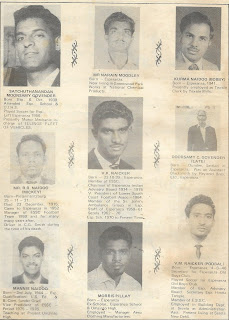A climate of despair, anxiety and sheer hopelessness has
gripped many, many people in a number of residential areas in and around Durban.
The loss of jobs and retrenchments during and after
the start of the Corona Virus lockdown in March (2020) have seriously affected
the lives of thousands of previously productive people.
I witnessed this really very sad state of affairs and
development when on Friday (Nov 20 2020) I visited the Longberry area of
Phoenix, north of Durban, to visit my father’s sister.
A short distance away from my aunty’s home is a
shopping centre where hundreds of people were lined up in two queues on the
side of one of the roads.
It was about 11:30am.
I went along to the shopping centre to check the
situation. I asked one of the people why were they waiting in two long lines on
the side of the road.
“We are waiting here to register for our UIF money,” one
middle-aged man told me. He declined to give me his name for fear of being
victimised by the Unemployment Insurance Fund (UIF).
He worked for a construction company for 10 years and
after the lockdown was introduced in March (2020) he was retrenched.
He had applied for his UIF funds in August but to
date he has not received any payments despite visiting the UIF office several
times.
“We are having a difficult time because I have not
been earning any wages since March this year,” he said.
After making further inquiries, I was told that the some
of the people in the two lines had come from far afield as KwaDukuza, to the
north, and Sydenham-Asherville in Durban. Most of the people had been waiting
in the two queues from early as 2:30am in the hope that they would be attended
to before the UIF officials close the office at 4pm.
Most of the people were wearing masks according to
the Covid-19 regulations. But, unfortunately, they were not maintaining any
social distance whatsoever.
“Only 10 people are attended to in the office and
they take about two to three hours to finish,” said one person, who has been
waiting since 3am.
“We don’t know why do they take so long to attend to
the people. It must either be the computers are not working or the officials
are not competent enough to do their jobs,” he said.
Another desperate person in the queue was a lady in
her early 60s. She had been working for a travel company for more than 40 years
but she was asked to take early retirement in March after the lockdown was
introduced.
She had applied for her unemployment funds in April
but to date her application has not been finalised yet.
“I don’t know what is going on? I have been waiting
here since early this morning but they only attend to 10 people at a time. The
other day I waited for the whole day without being attended to,” said the seriously
concerned woman.
“What is more tragic is that I have not yet received
my pension payments from my company.”
From my conversations with several other people it is
clear that people who have lost their jobs since the start of the lockdown in
March are finding it very difficult to pay their bills and to “put food on the
table” for their families.
“We are suffering and I don’t know when the situation
is going to improve for the people,” said one young man.
Hopelessness and despair seems to have gripped the
people on the margins of society. It’s hoped that President Cyril Ramaphosa and
other leaders from the ruling party will step out of their plush offices and palaces
and visit the marginalised areas to see the situation for themselves.
What’s tragic is that there are no government social
workers visiting these desperate families and to provide assistance for them?
Only non-government organisations such as the Gift of the Givers are providing food
parcels for desperate families at this time.
The latest gross unemployment situation is having a
serious impact on the social lives of the people. Ramaphosa and his “people’s
government” must ensure that conducive conditions are created for the economy
to grow so that people could find jobs to feed their families. Unfavourable
labour laws and runaway violent crime will only deter business leaders to
invest in our economy.
Ramaphosa must decide either to have favourable labour
laws for business people to continue to invest in the economy or rising
unemployment where the country’s new democracy is threatened? – ends subrygovender@gmail.com Nov 20 2020








































